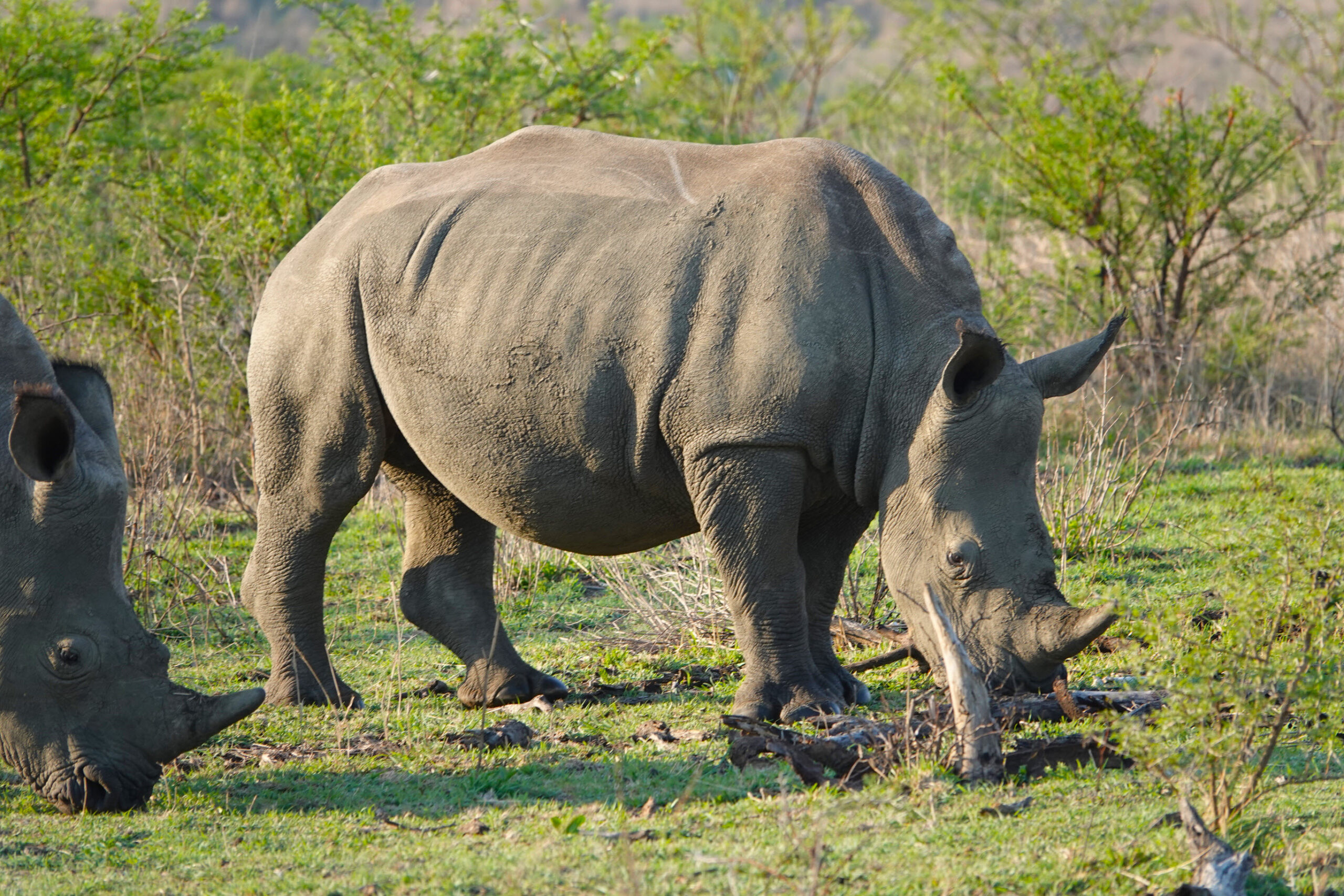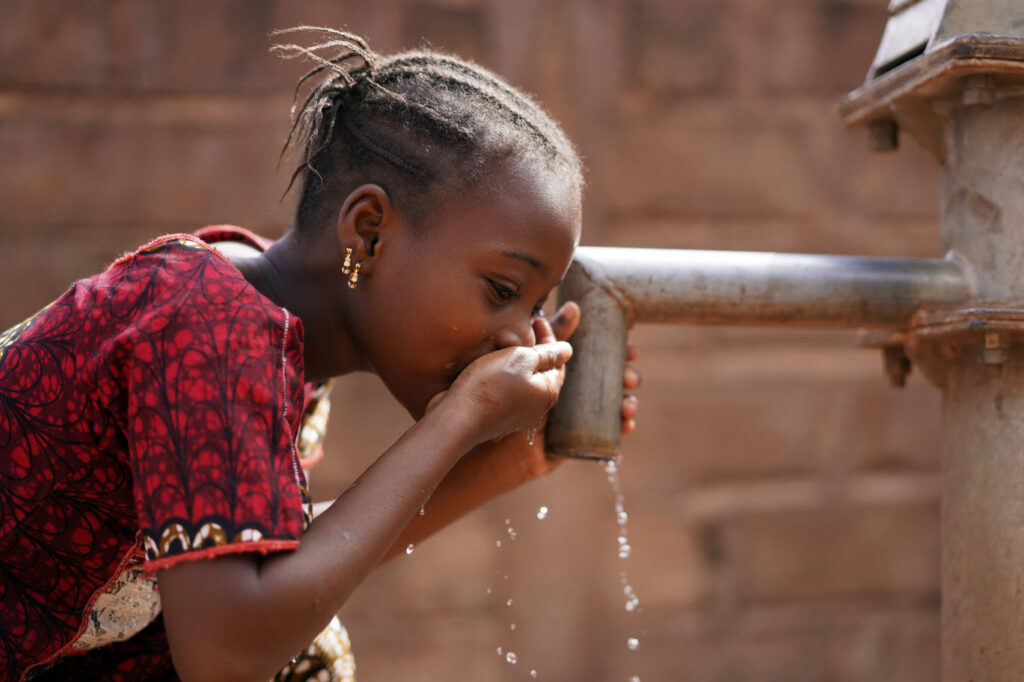“Science saving Rhinos. Rhinos Saving People. People Saving Rhinos.”
THE RHISOTOPE PROJECT.
Science Saving Rhinos
Part two of a profoundly significant trilogy.
For without Nature and our natural world guiding us and filling our souls, what would we be?
As an anthropologist, I am fascinated by humans. It’s humbling to be able to observe and unpack the complex and fascinating dynamic of what it means to be human – and to explore the intimate links between people and nature, nature and people.
Given today’s environmental challenges, it’s important never to forget that human passion and innovation can give rise to the most incredible opportunities to help save our planet, preserve all species and protect biodiversity. And hopefully rescue ourselves at the same time. We may be part of the problem, but equally, we are part of the solution.
But why rhinos? How can it be possible for a species to save us and not the other way around? The simple answer is to change the dynamic by bringing benefits to all in the name of an ambassador species. And rhinos have the power to be just such an ambassador.
Rhinos are architects of the landscape. They shape the natural world around them. Their singular presence creates a myriad of living spaces and opportunities for a complexity of living creatures to survive. From creating mud wallows, to being nature’s gardeners, to providing dung that feeds the earth, rhinos are truly magnificent creatures. Entire ecosystems and the survival of biodiversity rely on their presence for survival – and have done so for millions of years. We would like to see them continue to do so for millions of years to come.
Having said that, let’s be honest. Why would anyone living in an impoverished village, or a big city dweller or someone in a far-flung part of the planet, even care about a rhino or the issue of rhino poaching? The reason is rhinos matter in more ways than you can possibly imagine. By protecting rhinos, we are able to protect entire ecosystems and communities.
Thanks to The Rhisotope Project’s powerful combination of science and philanthropy we are able to use nuclear science techniques to devalue and track illegally taken wildlife goods. In tandem with this we can use the equally powerful tool of philanthropy and social upliftment to empower local people and communities.
Have you ever heard the African proverb: ‘An empty stomach has no ears’? Poverty and lack of access to basic resources is a daily challenge for many communities. Rather than being tempted to survive by accepting life-threatening engagement with poachers, a philanthropic presence empowers local communities to become rhino champions – a vital layer of protection for the species and the communities living near or amongst rhino populations.
In essence, a living rhino should have more value than a dead one in the hearts and minds of local and international communities. Because the rhino, as an iconic species, can actually become our protector.
When you consider the four black market trades of weapons, drugs, the illegal wildlife trade and human trafficking, the picture starts to unfold. Where you find one black market crime, you will always find at least one other. It goes without saying that weapons and wildlife trafficking are inextricably linked.
The black-market industry is growing every year and is currently valued at around $2,25 trillion, including illegal logging. This will only increase year on year unless innovative solutions are brought forth. The black market trade in wildlife trafficking alone is currently valued $23 billion and increases every year. Coupled with consumption of powdered horn, horns are used for trinkets, as a form of currency and status symbols that fuel these global issues.
Most people do not realise how rhino poaching affects every citizen on the planet until you understand that rhino horn is the most valuable false commodity on the black market. It then becomes clear why the death of a rhino in Africa or Asia, just for their horn, affects our global community. Rhino horn has more black-market trade value than gold, platinum, cocaine or diamonds. Horns can buy drugs. Horns can buy weapons. Horns act as a currency and a status symbol.
Given the high levels of poverty in the countries where rhino populations reside, it’s no wonder that local communities are the first target for criminals and crime syndicates. Rhino poaching consists of five levels. Level 1 refers to poachers on the ground to level 5 being the end user, on its passage through the hands of handlers, smugglers and fixers. The price of the horn per kilogram increases with every layer up the chain.
At level 1, crime syndicates and criminals prey on the most vulnerable. When your family is starving, or being threatened by criminals directly – it’s incredibly difficult to ignore the stark reality of hunger and fear. Those facing this daily threat will naturally consider their options – even if those options lead down a dark path. Sometimes, they have no choice.
Imagine that you have no access to work, clean water or basic resources. Imagine that you have children to feed, and a household of more than five people to support. How tempting in these tough times to consider cash offers for information on rhinos? Or to target people in communities who know where rhinos are? Money to hand may feed the family today, but the stark reality is, once in the grip of a syndicate – then what?
Imagine instead a water tank with the image of a rhino on it and a solar powered pump that fills it each day. The picture is clear. This pump and tank provide clean water for your home, your village and your animals every day. This same rhino tank waters the produce you grow in your village, your cooperative or school garden. And it is this very produce that feeds your family, your schoolchildren or your community on a daily basis. Imagine that all this was made possible because of a rhino.
This is where the beauty lies. The revelation. The realisation that the protection of these iconic rhinos – these magnificent mega herbivores that have roamed the earth for millions of years, can extend protection into every corner of the world.
The reality is that, by directly linking improved living and benefits to communities in the name of rhinos, we can help to create awareness and cultivate rhino champions. Helping people protect themselves in a safe and healthy way, makes communities more willing and able to protect a rhino by not allowing criminals into their communities – and thereby avoiding exploitation into the future.
With philanthropic funding support, The Rhisotope Project has identified a number of key endeavours that will help shift the dynamic. For example, Rhisotope has a specific focus area on women and girls, with a programme to supply reusable sanitary items. This helps young women maximise on their access to education and opportunities that arise from that.
Every month, thousands of young female learners are not able to attend school due to their monthly menses simply because sanitary care items are unaffordable for most of them. This means valuable time is lost during their window for education due to being unable to attend school for at least one week every month.
Imagine instead that every young woman is gifted with a reusable sanitary item kit. Each kit has a rhino image on it. This picture shows them how rhinos have made this this life-changing gift possible. Each sanitary towel in the kit is washable and lasts for five years, which is the duration of high school. The added bonus is this also reduces land waste which further helps to protect our environment.
Resources, skills development opportunities and improved living conditions in the name of rhinos as an ambassador species, will be an integral part of the success of Rhisotope. What a positive way to act towards the protection of the species, each other and our planet. The rhino becomes the protector.
Sharing knowledge about the rhino crisis and how it impacts our daily lives brings a direct connection towards improved living benefits because of the existence of a rhino. The cultivation of tourism and conservation champions in local communities goes a long way towards strengthening awareness through community togetherness and participation.
The reality is that there are more things that unite us than divide us. No matter who you are and no matter where you are in the world, all you wish for is access to basic resources and to live a safe, peaceful and healthy life.
The Rhisotope Project is one of the most innovative solutions to stem the trafficking tide and succeed in the fight against rhino poaching and the smuggling of horns.
From boreholes to food gardens, sanitary items to school desks – each and every opportunity for a better life is possible because of rhinos. The local villages become a line of protection. Local communities become active custodians. Entire regions become safe zones. The black-market trade is denied a critical point in its cash flow. Security in the name of rhinos translates into security for all.
A reduction in the number of poaching attempts coupled with local community engagement and appropriate philanthropic campaigns will have the desired overall effect of reducing the number of animals being taken for their horn.
Rhinos have become ambassadors for change, where everything will be able to thrive by their existence. We need a cascade of benefits to accrue between and amongst all living things – from homo sapiens right down to the soil and the tiniest insect or dung beetle. And we need all the help we can get to keep the momentum going in our great circle of life.
The Rhisotope Project was initiated in January 2021 and is being developed by Prof. James Larkin, who is the Director at the University of Witwatersrand’s Radiation and Health Physics Unit (RHPU).
The Rhisotope Project – a Wits Iconic Centenary Project – seeks to take a wholly different and innovative approach to addressing the issue of the illicit wildlife trafficking of various endangered species of fauna and flora. At a later stage, the technology will be adapted for elephants, pangolins and other species into the future.
A strong philanthropic campaign is due to start in Phase 3 of the Project.
Research shows that the poaching of animals such as rhinoceros isn’t done on an ad hoc basis, but is carefully organised by criminal syndicates operating to meet a specific demand.
If we succeed in reducing the demand by the end-user because they believe the horn will be radioactive and we change the reward/risk ratio in the minds of smugglers and get them to move away from wildlife trafficking, the natural result will be the reduction in the number of animals poached.
It should again be emphasised that Rhisotope technology will not itself guarantee stopping poaching on the ground, but rather act as a deterrent. If a horn is taken, easier detection and stronger prosecutions will soon influence poaching syndicates to avoid those areas where Rhisotope technology has been applied to rhino horns. This changes the risk reward/ratio considerably. Currently the poachers experience a low risk, high reward dynamic. We have the ability to change this.
There is currently no other technology or strategy that can combat the layers or complexities of rhinoceros horn poaching and smuggling to this scale globally. Failure to attempt alternative strategies will see a continued and unprecedented decrease in numbers in threatened species such as rhinos, in addition to global eco system health and integrity.
The development and application of this nuclear technology therefore has the capacity to help deter poaching, increase detection capabilities of smuggled horns and consignments of items globally, increase prosecution success under terrorism laws with harsher penalties as well as reveal smuggling routes and deter end-user markets.
But it all has to start somewhere, with someone. It starts with us.
Science saving rhinos. Rhinos saving people. People saving rhinos.
To gift this project with your generosity:
https://rhisotope.org/donate/
In the autumn edition we feature third part of this trilogy ‘People Saving Rhinos’ For more information: https://rhisotope.org

Meet Professor James Larkin.
Professor Larkin is Director, Radiation and Health Physics Unit (RHPU) at the University of the Witwatersrand. Professor Larkin is also the Chairman of the university’s NIH mandated Institutional Biosafety Committee (IBC) and is a past chairman of the International Atomic Energy Agency (IAEA) International Nuclear Security Education Network (INSEN). He continues to be heavily involved in international nuclear security education and, over the past 10 years, has been to numerous different countries to share his nuclear security knowledge and experiences with national, regional and international audiences. He works closely with both the IAEA’s sections on nuclear security (NSNS) and nuclear knowledge management (NKM) and the EU’s JRC Esarda, Italy, on several nuclear security and nuclear safeguards projects, most recently on an International Nuclear Safeguards qualification currently under development.
At Witwatersrand University he teaches various courses in nuclear security, radiation protection and nuclear facility leadership and acts as the university’s radiation safety officer.
Professor Larkin is a Fellow of the Royal Society of Medicine, UK (FRSM), member of the Institute for Nuclear Materials Management, US (INMM) and a founding member of the Southern African Radiation Protection Association (SARPA).
Meet the team
Think steel fist in a velvet glove. Amazons, the mythical tribe of warrior women. That would be how to describe the team. Jess Babich, the rock on which the project is built, brings many years of active conservation work. Becky Beith, financial controller, who resigned from her job to take a leap into the unknown. Laurian Mclaren, a passionate educator who has also worked in conservation for some years. Jess Shuttleworth, a qualified conservationist and social media star, who was one of the first to roll her sleeves up and join the project. Kayleigh De Villiers a great mind, a singing voice like an angel and social media guru, who also turned down employment to be part of the project and young Stacey Whitby, our scholar ambassador. Myself, an adjunct professor at University of Witwatersrand with a background in radiation protection, nuclear security and a deep and abiding love of African Wildlife.
More about Jessica (Jess) Babich
Jessica has a degree in anthropology and is passionate about wildlife and people. Her speciality is environmental anthropology – a particular dynamic that she brings into the Waterberg and The Rhisotope Project. As an independent sector consultant, her vision is to work with as many like-minded groups, organisations, people and projects as possible – uniting people to help them combat the crime and poaching scourge. She has extensive knowledge and experience in project research, planning and implementation. She is skilled in working with all sector dynamics, from grassroots and local entities through to provincial, national and international collectives. By saving rhinos, she believes that people will be saved too.
Jessica is Director of the UNESCO Waterberg Biosphere Region, Chairperson of the Waterberg Research Support Centre and Vice Chair of the Waterberg Nature Conservancy. Jessica is also involved in wildlife and socio-biographical media work, writing articles and scripts for local and international productions.
In the Autumn Edition we feature Part Three of this profoundly significant trilogy “People Saving Rhinos”. For more information: https://rhisotope.org/



